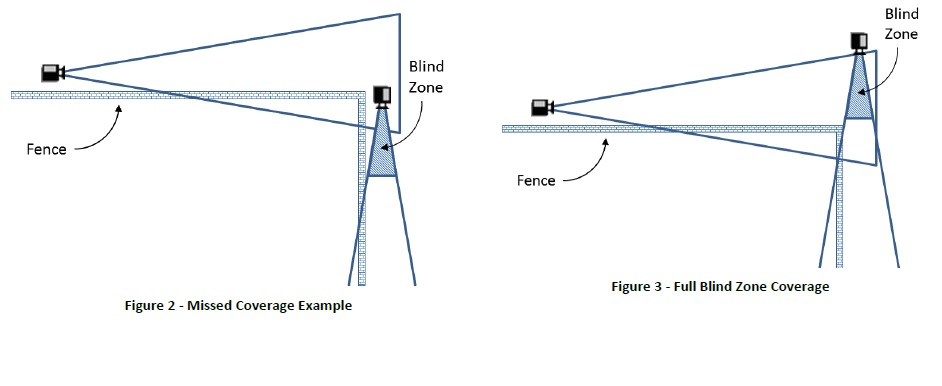3. Look to the Future
This may seem silly, but plan for growth. In this case, it's not about adding more cameras, increasing bandwidth or drive space, it's about real growth. That cute little sapling may not impact the perimeter today, but in a few years how is it going to impact your design? Will the tree obscure the camera's field of view thereby creating safe passage for an intruder? You are thinking it's just a tree. If it grows and becomes a problem just cut it down or keep it trimmed. Although that sounds logical,landscaping services are recurring costs, which are often harder to get approved versus the fixed cost of purchasing the perimeter system in the first place. Additionally, some locations are very restricted about destroying trees after they reach a certain size. At that point the decision to remove it may be out of the hands of the site owner, but he will have to bear the cost of modifying his security system to accommodate the tree.
Sometimes looking to the future is just about asking the correct question. If the current design includes the protection of an open space or makeshift storage yard, take the time to inquire about the future use of the area. Using one or two cameras with a wide field of view to cover an open space won't be a very effective solution after new storage buildings are placed in that same location during the next fiscal year.
4. Check your Blind Zone
Every camera has a blind zone. The size of that blind zone is determined by the camera lens, the mounting height of the camera and the mounting angle. Basic geometry will allow you to determine the effective blind zone of each camera. If you assume a human target, the blind zone begins at the mounting location of the camera. As the person walks away from the camera, the blind zone ends at the point where you can see their entire body in the video. That also explains why a good perimeter design includes both the maximum range and the minimum range for each camera.
This is a pretty straight forward concept when you have one camera following another camera along a fence line. Where most blind zone mistakes occur is when the coverage takes a turn, for example, at the corner of a property. The next camera is often placed directly at the corner, making it very difficult for the previous camera to cover the blind zone of the previous camera. In these cases, the camera may need to be moved away from the fence corner to insure coverage.

5. Don't get stuck in the Dark
It's easy to get caught up in the perimeter layout, taking time to evaluate camera locations, lenses and image resolution only to forget that all that changes when the sun goes down. In most cases, the limiting factor in coverage occurs in the evening hours. How do you intend to cover the scene in darkness? Will you use some type of illuminant, such as infrared or a visible light source, or perhaps the choice is a thermal sensor. A camera that can cover a 500m fence line during the day may be reduced to 200m at night due to the type of illumination being considered. This not only impacts the layout, but obviously has consequences on the final budget. An infrared illuminated camera will provide you some facial details and can allow viewing of license plates, but this adds a piece of equipment(mounting, power and maintenance) and is susceptible to weather conditions like rain, snow and fog. A thermal camera will cost you a more and won't be able to provide you facial or license plate details, but copes better with weather conditions. Bottom line; take the time to consider how the scene will be covered in nighttime operations.
.jpg)